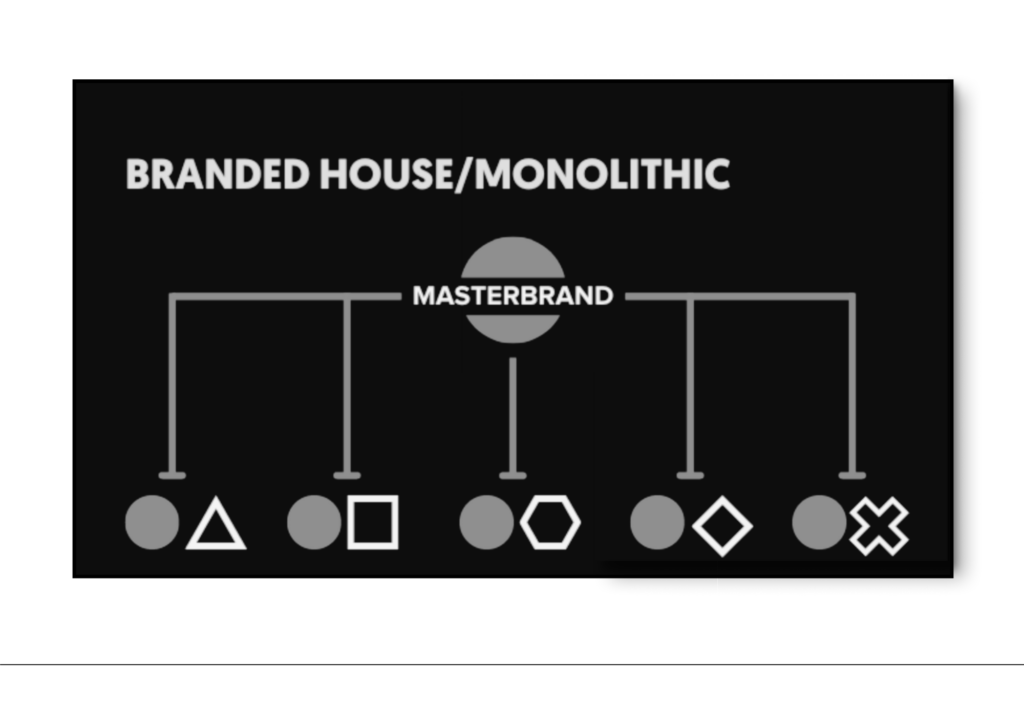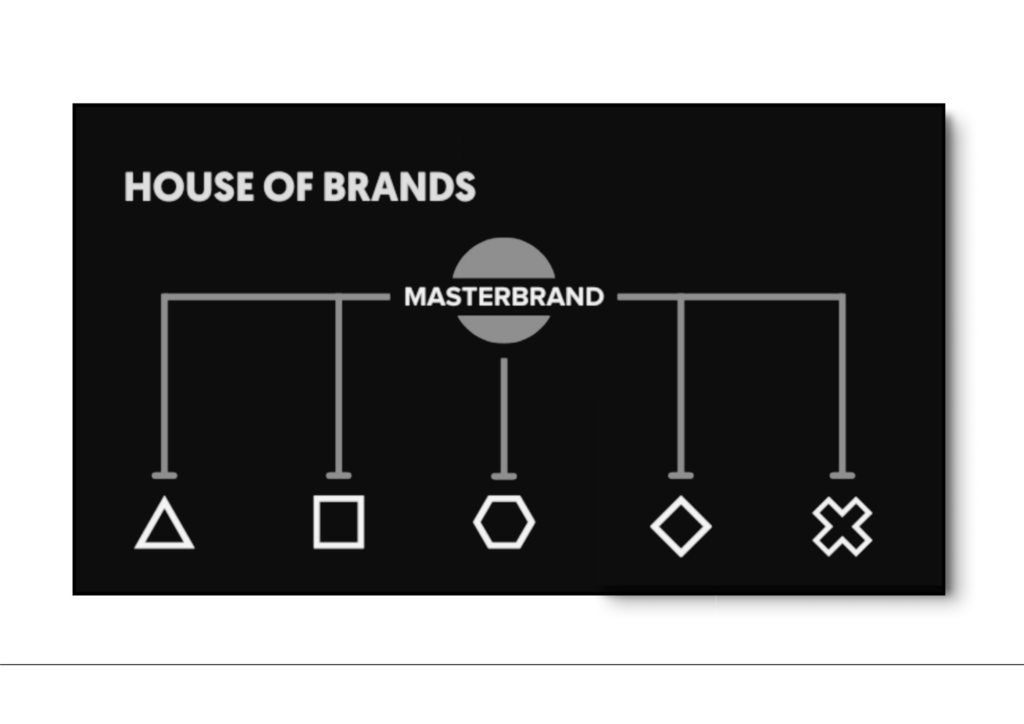Branded House vs. House of Brands: Which Strategy is Built to Last?
When it comes to brand architecture, there’s one big question every growing company needs to answer: do we build one strong brand that everything lives under—or do we let each product or service stand on its own –Branded House vs. House of Brands?
This is the classic showdown: Branded House vs. House of Brands.
Both have their strengths. Both can scale. But the way they shape perception, loyalty, and customer experience? Worlds apart.
Let’s break it down.
What’s the Difference Between a Branded House and a House of Brands?
Branded House

Think: Apple.
A Branded House is when all your products and services live under one unified identity. There’s one logo, one tone of voice, one core promise. You’re not building multiple brands—you’re deepening one.
Examples:
- Apple: iPhone, iPad, MacBook, AirPods. Same aesthetic, same experience.
- Google: Search, Gmail, Drive, Maps. All unmistakably “Google.”
- Virgin: From airlines to media to space tourism, every product keeps the cheeky, rebellious Virgin spirit.
It’s like Beyoncé. She can shift genres, reinvent looks, surprise us—but no matter what she does, you know it’s Beyoncé.
House of Brands

Think: Procter & Gamble.
A House of Brands is a parent company that owns multiple distinct brands. Each one has its own identity, voice, and audience. Most customers don’t even know who the parent company is—and that’s the point.
Examples:
- P&G: Tide, Pampers, Gillette, Olay. No shared visual language, no overlap.
- Unilever: Dove and Axe couldn’t be more different, yet they’re siblings under the same corporate roof.
- Coca-Cola Company: Coca-Cola, Sprite, Fanta, Smartwater. Different vibes, different customers.
This is Taylor Swift’s branding approach—each album (or in this case, brand) has its own mood, aesthetic, and fanbase. Reinvention is part of the strategy.
Why a Brand Might Choose One Over the Other
Branded House Wins When:
- You’re creating a seamless customer journey across multiple products or services.
- Your audience is similar across offerings—no need to split the message.
- You want to build equity and depth in a single brand name.
- You’re aiming for efficiency in marketing, design, and content.
This is the go-to move for service-based brands, tech platforms, and experience-driven companies. The consistency builds trust faster and allows every touchpoint to reinforce the same story.
House of Brands Wins When:
- Your products target different audiences with different needs or values.
- You’re acquiring other brands and don’t want to rebrand them.
- You want to minimize risk—if one brand flops, it doesn’t damage the others.
- You need the freedom to test, evolve, or sunset brands without dragging down the parent name.
This model is powerful for CPG companies, large conglomerates, and brand collectives where emotional connection isn’t necessarily tied to a parent brand.
Why We’re Into the Branded House Strategy
Let’s be honest: both models can work. But a Branded House offers something a House of Brands just… can’t. Especially if your goal is to build a world—not just move products.
Here’s why a Branded House is such a power move:
1. More Story, Less Fragmentation
You can layer meaning, emotion, and personality into your brand over time—without having to start from scratch for every offer.
2. Trust is Transferable
If a customer loves your main product, they’re way more likely to try your next one if it shares the same name, tone, and feel.
3. Operationally Smart
One brand = one content calendar, one design system, one website to manage. It’s not just strategic—it’s efficient.
4. Big Picture Energy
When every offer ladders up to the same mission, your brand starts to feel like a movement. It creates depth, not just visibility.
Let’s go back to Apple. When someone buys AirPods, they’re not just buying sound—they’re buying into the Apple way: clean design, seamless integration, elevated simplicity. That’s the magic of a Branded House. It makes every new product feel like a natural next step.
So… Which One is Right for You?
Ask yourself:
- Do your offers need separate identities, or could they thrive with shared DNA?
- Are your audiences wildly different, or do they care about the same core values?
- Do you want to build a universe—or a portfolio?
A Branded House is about cohesion, connection, and creating something bigger than the sum of its parts. A House of Brands is about agility, segmentation, and protecting your bets.
There’s no one-size-fits-all. But knowing which path you’re on (or want to be on) makes every brand decision down the road that much easier.
P.S. If you’re leaning toward the Branded House and want help shaping a brand that actually feels like a world—not just a logo—we should talk. Or at the very least, I can help you write a manifesto Beyoncé herself would nod at.

instagram links page
Your Instagram bio page is prime real estate. So hit the backspace on that Linktree, and let's give your audience a memorable place to land (and stick around).